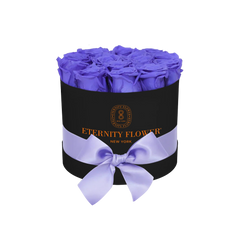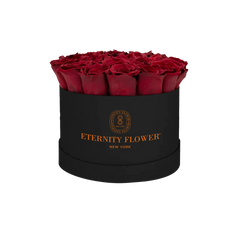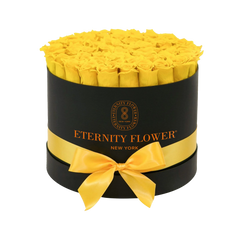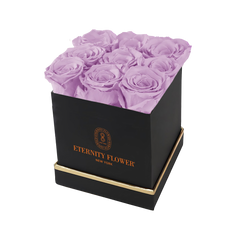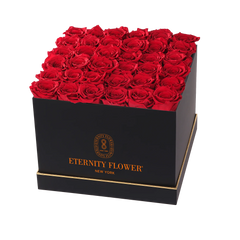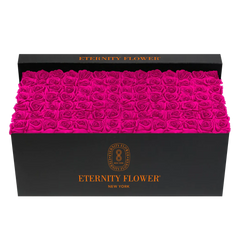We've reached the letter A in our botanical trip through the alphabet. This letter starts a world of beauty, strength, and variety. These flowers that start with A will show you the amazing variety and endless beauty. You are about to be blown away!
1. Acacia

Acacia, often symbolizing secret love and affection, brings the warmth of its yellow and cream flowers to landscapes. Its fluffy, spherical blossoms sit atop fern-like foliage, creating a contrast that captures the eye and warms the heart.
- Habitat: Native to Australia and Africa, thriving in warm, tropical to subtropical climates.
- Colors: Mainly yellow, but some species may have cream or pale yellow flowers.
2. Acanthus

Acanthus, known for inspiring the Corinthian column capitals in classical architecture, bears spiky leaves and towering spikes of white or purplish flowers. It's a symbol of art and ancient beauty.
- Habitat: Mediterranean region.
- Colors: White, with purplish bracts.
3. Achillea

Achillea, or Yarrow, is admired for its flat-topped clusters of small, vibrant flowers and fern-like foliage. It represents healing, courage, and love.
- Habitat: Native to temperate regions of the Northern Hemisphere.
- Colors: White, yellow, pink, and red.
4. Aconite

Aconite, also known as Monkshood, is beautiful but deadly, with deep blue or purple helmet-shaped flowers. It embodies caution and danger, alongside its striking beauty.
- Habitat: Northern Hemisphere, especially in mountainous regions.
- Colors: Blue, purple, and sometimes white or yellow.
5. Adam’s Needle

Adam’s Needle (Yucca filamentosa) showcases tall spikes of creamy white, bell-shaped flowers rising from a rosette of dagger-shaped leaves. It symbolizes survival and adaptability.
- Habitat: Native to the southeastern United States.
- Colors: Creamy white.
6. Adder’s Tongue

Adder’s Tongue, a delicate wildflower, often goes unnoticed. Its singular yellow-green flower and broad leaf are a testament to the subtle beauty that nature harbors.
- Habitat: Woodlands and meadows across Europe and North America.
- Colors: Yellow-green.
7. African Boxwood

African Boxwood (Myrsine africana), despite its common name, offers more than just foliage; small, inconspicuous flowers give way to vibrant berries. It represents resilience and versatility.
- Habitat: Native to South Africa, thriving in a variety of habitats.
- Colors: Greenish-white flowers, but more known for its foliage and berries.
8. African Flame Lily

African Flame Lily stands out with its exotic, vibrant red or orange flowers with wavy edges, often climbing and twining its way upwards. It symbolizes passion and strong emotions.
- Habitat: Native to tropical and southern Africa, and parts of tropical Asia.
- Colors: Red, orange, and sometimes yellow.
9. Agapanthus

Agapanthus, commonly known as the Lily of the Nile, showcases stunning globes of blue or white flowers atop tall, sturdy stems, symbolizing love letters and admiration. Its beauty is both majestic and delicate, echoing the mystery of the rivers of Egypt.
- Habitat: Native to Southern Africa.
- Colors: Blue, white.
10. Ageratum

Ageratum, with its fluffy, tuft-like clusters of blue, purple, or white flowers, brings a soft, fuzzy texture to the floral world. It stands for longevity and affection, adding a touch of gentle color to gardens.
- Habitat: Native to Central America and Mexico.
- Colors: Blue, purple, white.
11. Allium

Allium, known for its striking, spherical blooms, ranges from the ornamental giant Alliums to the culinary onions, garlic, and chives. Symbolizing unity, strength, and patience, these flowers add architectural interest to any garden.
- Habitat: Widely distributed across the Northern Hemisphere.
- Colors: Purple, blue, white, and pink.
12. Almond Blossom

Almond Blossom, heralding the arrival of spring, blankets the almond trees in soft, pastel blooms. These delicate flowers symbolize hope and awakening, painting landscapes in hues of pink and white.
- Habitat: Native to the Middle East and South Asia.
- Colors: White and pink.
13. Aloe Succotrina

Aloe Succotrina, or the Fynbos Aloe, offers striking, tall spikes of red or orange flowers, emerging from a rosette of thick, succulent leaves. It symbolizes healing and protection, reflecting its medicinal properties.
- Habitat: Native to South Africa.
- Colors: Red, orange.
14. Alstroemeria

Alstroemeria, also known as the Peruvian Lily or Lily of the Incas, delights with its speckled, trumpet-shaped flowers. Representing friendship and devotion, its blooms come in a variety of warm shades, adding vibrancy and color.
- Habitat: Native to South America, particularly Chile and Brazil.
- Colors: Yellow, red, orange, pink, and white.
15. Alyssum

Alyssum, with its tiny, honey-scented flowers, forms dense mats of color, symbolizing beauty. It's a favorite among gardeners for ground cover or rock gardens, spreading charm through white, pink, purple, and yellow blooms.
- Habitat: Native to Europe, Asia, and Northern Africa.
- Colors: White, pink, purple, yellow.
Read More: 36+ List of Flowers that start with C and Where You Can Find It
16. Amaranthus hypochondriacus

Amaranthus hypochondriacus, known as Prince-of-Wales Feather, stands out with its dramatic, cascading blooms in shades of red, purple, or gold. Symbolizing immortality and unending beauty, it adds a bold statement to any setting.
- Habitat: Originally from Mexico and Central America.
- Colors: Red, purple, gold.
17. Angelica

Angelica is a genus comprising many species, with Angelica archangelica being one of the most notable. This plant is revered not only for its impressive stature and architectural qualities but also for its historical and medicinal significance.
- Habitat: Found in northern and eastern Europe, some regions of Asia, and North America.
- Colors: Greenish-white
18. Amaryllis

Amaryllis, with its large, trumpet-shaped flowers, exudes elegance and pride. These striking blooms, often associated with strength and determination, come just in time to add cheer during the winter months.
- Habitat: Native to South Africa's Cape Province.
- Colors: Red, white, pink, orange, and variegated patterns.
19. Ambrosia

Ambrosia, a name that translates to "food of the gods," is more commonly associated with ragweed. While not celebrated for its flowers, which are small and inconspicuous, it plays a significant role in the ecosystem as a pollen producer.
- Habitat: Native to North America.
- Colors: Green, yellow (though not typically admired for its blooms).
20. American Ash

American Ash, not typically thought of for its flowers, provides significant value through its foliage and the structural beauty of its wood. Its small, purplish flowers are often overlooked in favor of the tree's overall contribution to forests and landscapes.
- Habitat: Native to eastern and central North America.
- Colors: Purplish flowers, but more recognized for its foliage and wood.
21. Ammi majus

Ammi majus, also known as Bishop's weed or Queen Anne's lace, is admired for its delicate, white, lace-like flowers. It symbolizes protection and captures the essence of wild, untamed beauty in its intricate blooms.
- Habitat: Native to the Nile River Valley, but has been widely naturalized in many regions.
- Colors: White.
22. Amur Adonis

Amur Adonis, a spring-blooming flower, is part of the Ranunculaceae family. Its bright yellow blooms are a herald of spring, symbolizing admiration and the joy of new beginnings.
- Habitat: Native to Eastern Asia, including China, Japan, and Siberia.
- Colors: Bright yellow.
23. Anemone

Anemone, often associated with anticipation and protection from evil, these delicate flowers are a spring favorite. According to myth, anemones were created by the tears of Aphrodite as she mourned Adonis, adding a layer of depth and beauty to their presence.
- Habitat: Found in many parts of the world, including Europe, Japan, and North America.
- Colors: White, blue, red, pink, purple.
24. Anthurium

Anthurium, another diverse genus, is well-loved for its shiny, heart-shaped spathes, which are often mistaken for flowers but are actually modified leaves designed to attract pollinators to the true flowers on the spadix.
- Habitat: Thrives in warm, humid environments with indirect light, typical of tropical rainforests.
- Colors: Red, white, pink, and green, often cream or yellow.
Read More: 80 Red Flowers Names, Photos, with Easy Planting Tips!
25. Angelonia

Angelonia, also known as summer snapdragon, offers a touch of grace with its spiky blooms that resemble small snapdragons. It symbolizes serenity and is a popular choice for adding a splash of color to summer gardens.
- Habitat: Native to Mexico and the West Indies.
- Colors: Purple, pink, white, and blue.
26. Apache Plume

Apache Plume, named for its feathery, plume-like seeds that follow the white or pink flowers, embodies the spirit of the Southwest. It's a symbol of beauty and survival in arid landscapes.
- Habitat: Native to the southwestern United States and northern Mexico.
- Colors: White, pink.
27. Apple Blossom

Apple Blossom, the delicate flowers of apple trees, symbolize promise and good fortune. Their soft, pink-tinged petals herald the coming of spring and the promise of a bountiful harvest.
- Habitat: Cultivated worldwide, originating from Central Asia.
- Colors: White, pink.
28. Arbutus

Arbutus, also known as the strawberry tree, is valued not only for its beautiful flowers but also for its edible fruit. The bell-shaped, white or pink flowers symbolize good luck and protection.
- Habitat: Native to the Mediterranean region and western Europe.
- Colors: White, pink.
29. Ardisia

Ardisia, with its small, star-shaped flowers and bright red berries, brings a pop of color and intrigue to shaded gardens. It symbolizes good fortune and celebration, often used in holiday decorations for its persistent, ornamental berries.
- Habitat: Native to East Asia and the Americas.
- Colors: White, pink.
30. Aromatic Aster

Aromatic Aster, known for its profuse, daisy-like purple flowers, fills the late-season garden with color and fragrance. It symbolizes patience and enduring love, thriving in the challenging conditions of fall.
- Habitat: Native to North America, particularly the central and eastern regions.
- Colors: Purple, blue.
31. Artemisia

Artemisia, comprising a wide range of species including the aromatic wormwood, silver mound, and sagebrush, is valued for its silvery-green foliage rather than its flowers. It symbolizes protection and healing, used historically in both culinary and medicinal contexts.
- Habitat: Widespread across the Northern Hemisphere.
- Colors: Foliage is primarily silver-green; flowers are often inconspicuous.
32. Artichoke thistle

Artichoke thistle, or cardoon, is valued both for its striking architectural presence in the garden and its edible qualities. Its large, thistle-like purple flowers atop tall, silvery-green foliage represent prosperity and bounty.
- Habitat: Native to the Mediterranean region.
- Colors: Purple.
33. Asian Spider Flower

Asian Spider Flower, with its delicate, spider-like flowers, adds a unique texture and visual interest to gardens. It symbolizes mystery and fascination, capturing the imagination with its unusual appearance.
- Habitat: Native to Asia.
- Colors: White, pink.
34. Astilbe Flowers

Astilbe Flowers are celebrated for their feathery, plume-like flowers, adding a soft, ethereal quality to shady garden spots. They symbolize patience and dedication to a loved one, thriving in moist, shadowed areas with their vibrant shades.
- Habitat: Native to mountain ravines and woodlands in Asia and North America.
- Colors: Pink, red, white, lavender.
35. Astragalus

Astragalus, often known as milkvetch, includes a vast array of species, some of which are known for their medicinal properties. The plant's small, pea-like flowers cluster together, symbolizing protection and health.
- Habitat: Widely distributed across the Northern Hemisphere, particularly in Asia and North America.
- Colors: Varies greatly, but commonly yellow, purple, and white.
36. Azaleas

Azaleas, part of the Rhododendron family, dazzle with their vivid blooms and deep green foliage. They are a symbol of femininity, temperance, and passion, often used in gardens to create a stunning display of color in spring.
- Habitat: Native to several continents including Asia, Europe, and North America, thriving in temperate climates.
- Colors: Pink, red, white, purple, and orange.
37. African Daisy

African Daisy (Osteospermum), with its vivid, cheerful flowers, can brighten up any garden. It symbolizes exotic beauty and a new beginning, adapting well to both gardens and containers. Its sun-seeking flower heads come in a wide range of colors, often with striking, dark central discs.
- Habitat: Native to southern and eastern Africa and the Arabian Peninsula.
- Colors: White, pink, purple, blue, yellow, and orange.
38. Arum

Arum, belonging to the genus of flowering plants in the family Araceae, includes the striking Arum lily. Its unique shape and the contrast between the spathe and the spadix make it a symbol of purity and elegance. However, it's also known for its ability to generate heat, attracting pollinators with its smell.
- Habitat: Widely found in Europe, Africa, and Asia.
- Colors: White, green, purple.
39. Anthericum

Anthericum, also known as St. Bernard's lily, features graceful, star-shaped white flowers borne on slender stems above clumps of narrow, grass-like leaves. It's a plant that brings a light, airy texture to garden settings, symbolizing purity and simplicity.
- Habitat: Native to Europe, Africa, and Asia, it thrives in well-drained soil in sunny to partially shaded locations.
- Colors: White, with a sometimes greenish or yellowish center.
Read More: 25 Rarest Flower in The World With Stories to Tell
40. Astrantia

Also known as Masterwort, Astrantia is a charming and somewhat underappreciated perennial, known for its unique star-shaped blooms. These flowers have a pincushion appearance, surrounded by a collar of bracts, making them highly attractive in garden settings and floral arrangements.
- Habitat: Native to Europe and Western Asia.
- Colors: White, pink, and mauve, sometimes with hints of green.






